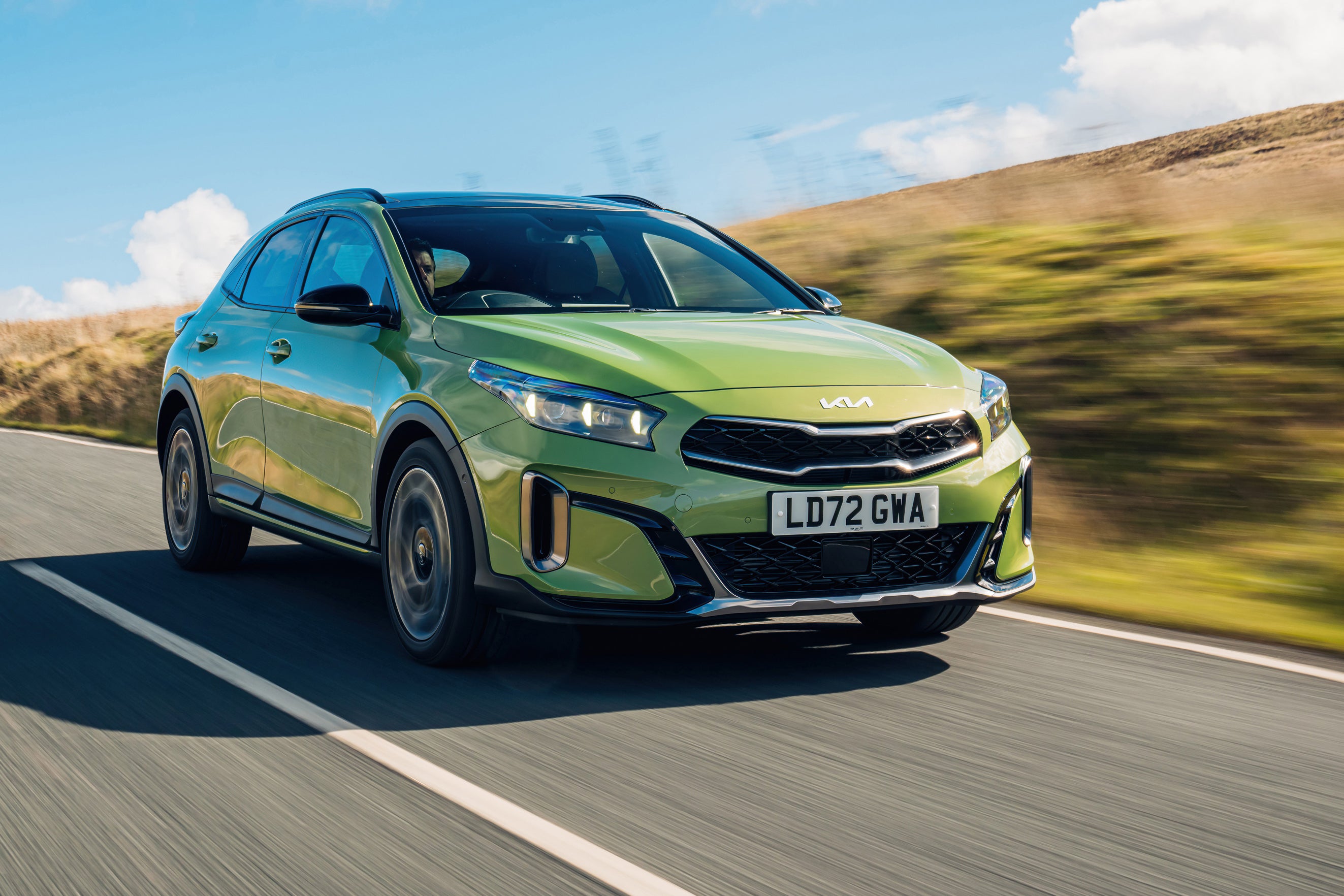Kia XCeed Review 2024
Written by Lawrence Allan
Quick overview
Pros
- Smart design despite its age
- Decent driving experience
- Seven-year warranty is transferable to second owner
Cons
- 2022 update doesn't change much
- Not as practical as the Kia Sportage
- Kia Ceed pretty much does the same job
Overall verdict on the Kia XCeed
"The Kia XCeed is an affordable take on a smaller family SUV, but in essence it's little more than a Ceed with a revised body and raised suspension. You get a slightly higher seating position, plenty of standard equipment and a well-built, logical cabin, plus a good all-round driving experience and plug-in hybrid engine option. As our Kia XCeed review shows, it's a very appealing family proposition."
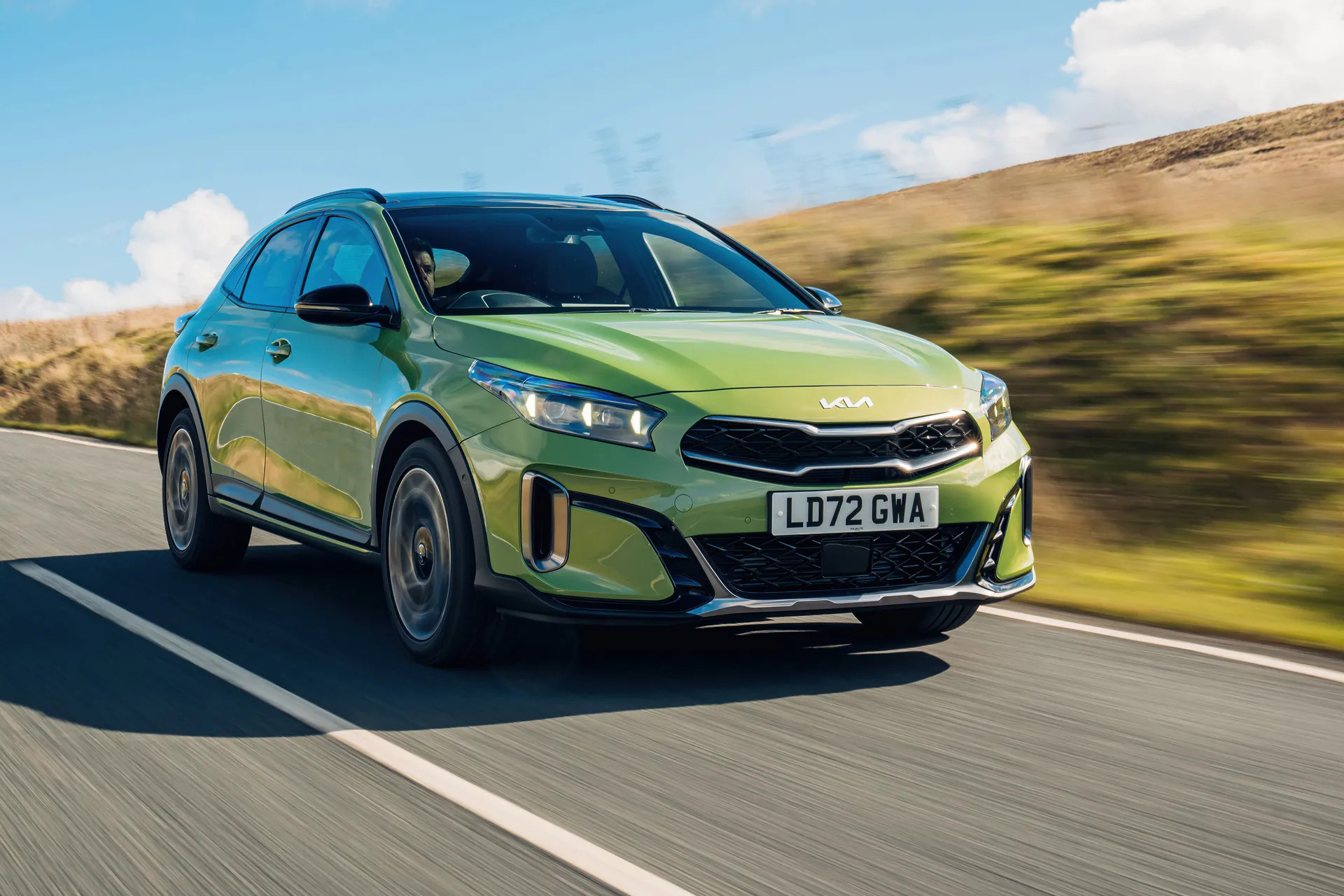
The Kia XCeed is the car you buy if a standard hatchback doesn't really do it for you, but you don't want the extra cost, performance and efficiency compromises of a bigger, heavier SUV.
To all intents and purposes, the XCeed is a Kia Ceed with a sprinkling of family SUV ingredients thrown into the recipe. So it sits a bit higher, has a unique body design (only the front doors are shared with the Ceed, allegedly), and a little more practicality. The recipe seems to be working - Kia says just over half of Ceed family sales go to the XCeed.
In 2022, the Kia XCeed received some mild visual updates to keep it fresh next to rivals such as the Mazda CX-30, Ford Focus Active and Volkswagen T-Roc. There were new LED headlights and tail-lights, a revised grille, freshened bumpers front and rear and new drag-reducing 'air curtains' at the front. Kia also added a bold new bright green colour - make your mind up on that in the images - along with the brand's new logo that (to our eyes) looks more like 'KIN' than 'KIA'.
Insid is a cabin largely free of silly gimmicks and irritation, with plenty of physical buttons to control things, easy-to-use infotainment and a good overall standard of quality. But the same is true of the regular Ceed.
The GT-Line S trim has natty rear lights, different exterior design elements, a digital instrument cluster and sports seats. GT-Line trim is very popular on other Kias, meaning it'll hold its value on the used market, and given even this high-end trim costs a shade less than £32,000 it won't break the bank.
A downside of the XCeed’s approach to the SUV class is that it’s not much more practical than something like a Volkswagen Golf or Ford Focus. Or, indeed, a Kia Ceed. Certainly, a fully-fledged SUV such as the Nissan Qashqai offers more room for the family.
Adults in the back have acceptable but not overly generous levels of space in the Kia XCeed, and although the 426 litre boot capacity is 31 litres more than a regular Ceed it's some way off what a 'proper' family SUV or estate will offer. If practicality’s important, you’d be better looking at a Kia Sportage or the estate version of the Ford Focus Active or Volkswagen Golf Alltrack.
The Kia XCeed's 44mm increase in ride height and revised suspension means it's more comfortable to drive than the Ceed, with its relatively soft suspension absorbing lumps and bumps in the road nicely. It’s not quite as agile as the Ford Focus Active but few drivers will have any complaints about how the XCeed drives - competently, with tidy enough handling.
Before the 2022 facelift the Kia XCeed was sold with 1.0-litre and 1.4-litre (later changed to 1.5-litre) petrol engines, a diesel and a plug-in hybrid version with a 1.6-litre petrol engine. The 1.5-litre petrol and plug-in hybrid are the only versions that remain now, with the former gaining mild hybrid technology for greater efficiency.
Looking for a used car for sale? We've got 100s of Kia Approved Used Cars for Sale for you to choose from, including a wide range of Kia XCeed cars for sale.
Is the Kia XCeed right for you?
If you don’t need anything more practical than a conventional family hatchback but want something a little more SUV-like, the Kia XCeed is a good choice.
It’s got a slightly higher seating position than the Kia Ceed and its raised suspension copes well with bumpy roads. In true Kia form, it represents good value for money, although certain high-end models push closer towards proper SUV territory. Still, a transferable seven-year warranty and an extensive list of standard equipment combine to help the XCeed make a strong case for itself on the used market.
What’s the best Kia XCeed model/engine to choose?
In terms of engines, before the facelift we'd say the 1.0-litre petrol does a decent enough job for an entry-level engine. The diesel is fine (and very efficient for high-mileage drivers) but not outstanding, while the 1.4 or 1.5-litre engines offer a good blend of overtaking power and efficiency.
As of 2022, we'd recommend going for the 1.5-litre petrol. It offers enough performance for most buyers' needs and doesn't break the bank when it comes to thirst, tax or the list price itself. The plug-in hybrid commands around a £6,000 premium - it only comes in 3 trim - but isn't noticeably faster or nicer to drive, so unless you're a company car user or plan to make full use of plugging it in and running in EV mode, we wouldn't bother.
Generally-speaking, we'd say the mid-level 3 spec offers the best blend of kit and price, but we'd understand if the nicer-looking GT-Line S appealed, so long as the price is right.
What other cars are similar to the Kia XCeed?
There are plenty of stylish small SUVs that are a similar size to the Kia XCeed. Obvious competitors are the Ford Focus Active and Mazda CX-30. Both are more enjoyable than the XCeed to drive, while the CX-30 has a more premium interior. There’s also the Volkswagen T-Roc, which has the desirable Volkswagen badge but isn’t as well-equipped for the cash, while the Toyota C-HR is a hybrid alternative with a more striking design.
Comfort and design: Kia XCeed interior
"The Kia XCeed's cabin isn't much different than a Ceed's, but that's no bad thing. It's smart enough to not be dull yet has a sensible, logical design. It's starting to look a bit old compared to the newer Sportage, however."
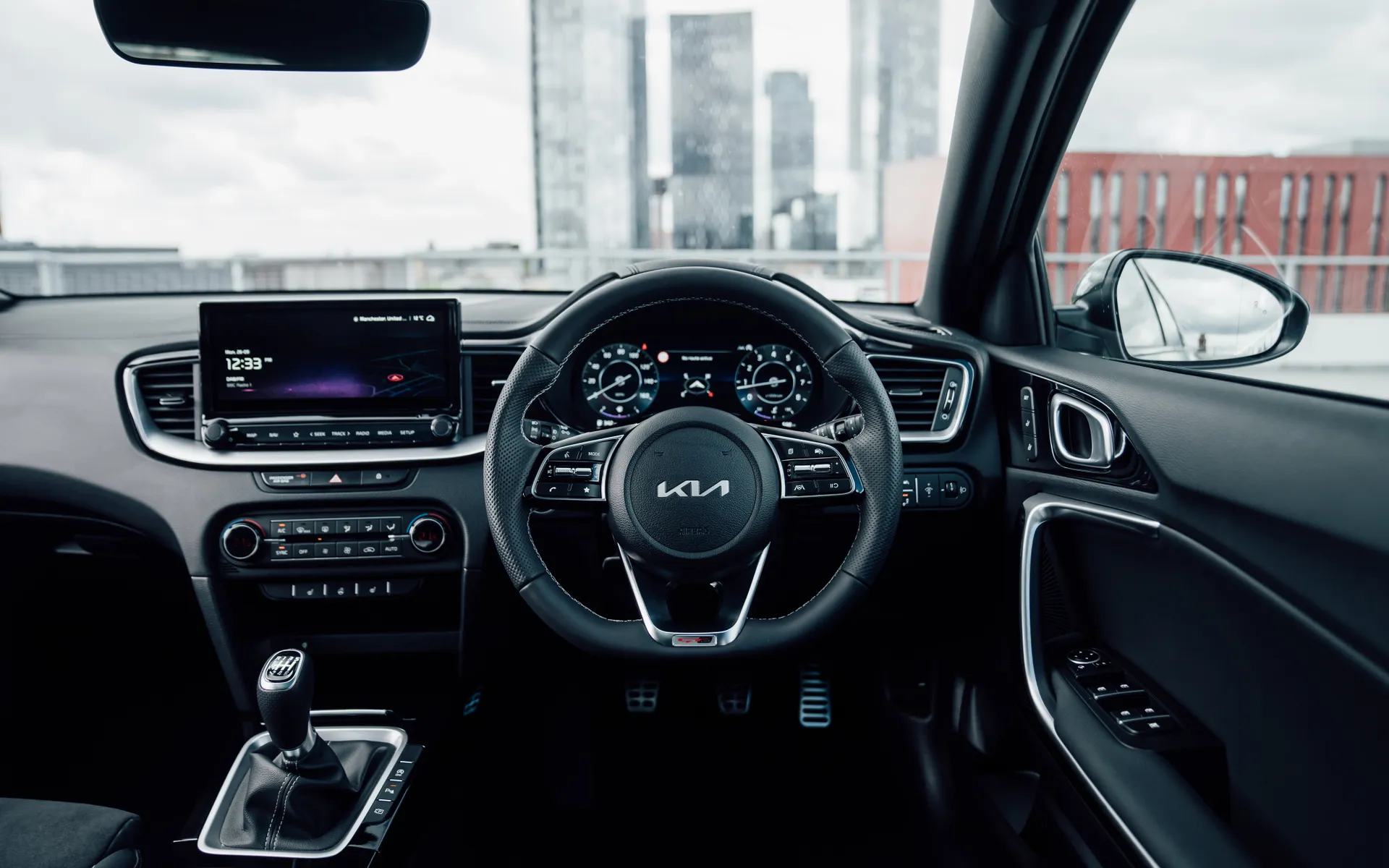
If you're one of those people who think's there are too many gimmicks and too much of a reliance on touchscreens in new car interiors, then the Kia XCeed might well be for you. It has a touchscreen and pretty much all of the modern kit, but there's plenty of physical buttons to control functions much more easily on the move.
The Kia XCeed is comfortable, too. There’s a decent amount of adjustment in the driver’s seat and steering wheel, meaning you should be able to find a comfortable driving position - albeit perhaps not as high as other small SUVs. You’ll need a Kia XCeed First Edition if you want electric height adjustment in the driver’s seat, although this isn’t really an issue unless you change driver regularly.
The XCeed in 2 spec does without adjustable lumbar support for the driver and front passenger, although the rest of the range has it - making it easier to keep comfortable on long journeys. The entry-level car doesn’t have height adjustment for the passenger seat, either.
Another problem is that the design is getting on a touch. The Kia Xceed first arrived in 2019, but the Ceed on which it's based has been around since 2018. Okay, so it hardly compares to the Fiat 500 for keeping an old car going for longer than it should, but Kia's latest designs (such as the bigger Sportage SUV) seem noticeably more modern inside.
Higher-spec trim levels come with heated front seats, heated steering wheel and heated outer rear seats. Don’t underestimate the attraction of these features on a cold winter morning.
Quality and finish
The Kia XCeed’s cabin is certainly a step up from the dank and dark interiors of older Korean cars. It’s actually a bit nicer than the Ford Focus Active in terms of quality, while it’s got more soft-touch materials and glossy finishes than the Toyota C-HR.
We wouldn’t go as far as saying the XCeed feels premium inside (even the Volkswagen T-Roc isn’t that plush), but it does give the impression that it’ll wear well over time.
Higher-spec Kia XCeed models get cloth with faux leather seats which add a touch of class, while the GT-Line S has proper hide covering its seats, and we like the yellow stitching on the early First Edition models. Little things like the sliding armrest on the front centre console storage box, chrome-effect trim and perforated leather on the wheel and gear knob on sportier trims manage to make the XCeed feel like a more upmarket offering.
Infotainment: Touchscreen, USB, nav and stereo in the Kia XCeed
As standard, the Kia XCeed comes with an eight-inch media system that does without sat-nav but does feature Apple CarPlay and Android Auto, meaning you can use navigation apps on your phone instead (they’re usually better than in-built systems, anyway).
This is functional rather than fancy. It’s perched on the dash, flanked by two air vents and looking a bit like a tablet that’s been glued in as an afterthought. It’s well-placed for glancing at during driving although, relying solely on its touchscreen for navigating menus, it’s not the safest system to use on the move.
For a more upmarket infotainment experience, look for a Kia XCeed 3 or above, which come with a 10.25-inch display and navigation. This is no easier than the smaller system to use on the move, but its menus are laid out logically and you can split the screen into three (great for having access to the radio and navigation at the same time). It’s quicker to use than the standard system and has sharper graphics, while its bigger screen helps the XCeed feel like a more premium car.
The Kia XCeed First Edition came with a 12.3-inch screen in place of conventional dials. A cut-price version of Audi’s Virtual Cockpit, this looks pretty swish but its customisation options are limited. Only the GT-Line S trim has this for new buyers. Other tech highlights include a premium JBL sound system for these two models and wireless phone charging. It’s a shame they’re not even offered as options on other trim levels.
As part of the facelift in 2022, USB-C connections for front and rear passengers were also added. Of course, there's also Apple CarPlay and Android Auto connections.
Facelifted cars have connectivity including the ability to integrate your Google or Apple diary to the touchscreen to receive appointment reminders (and locations for the sat-nav), while enhanced connected serves and an updated Kia Connect app brings live traffic data, weather forecasts and live parking information. You can also create two user profiles if there is more than one driver.
Space and practicality: Kia XCeed boot space
The Kia XCeed does a good impression of being a spacious car, particularly up front where there’s plenty of room for a pair of tall adults and loads of handy storage areas. There’s a big cubby box underneath the central armrest, two generous cup holders between the front seats and a roof-mounted sunglasses holder. Even the door bins are usefully large.
Things aren’t so great in the back where there’s no noticeable difference in space between the XCeed and the Ceed hatchback on which it’s based. Headroom is rather limited for taller adults, especially on cars with the panoramic sunroof fitted. Those over six foot will find legroom isn't massively generous either, and fitting three in the back will be a squeeze.
Still, access is easy thanks to the slightly higher seating position than the standard Ceed while the doors open usefully wide. This’ll help when fitting child seats, too - as will Isofix points which are fitted to the outer rear seats.
The Kia XCeed's boot space is adequate rather than impressive. It’s quite shallow because of that sloping roofline, while it has quite a high lip which could be a nuisance if you’re loading bulky items. It can carry 426 litres of luggage which is more than the standard Ceed and the Ford Focus Active (although this is available as a more practical estate model as well), but slightly less than the Volkswagen T-Roc.
If you need more boot space, you might be disappointed to find there isn’t a sliding rear bench on the Kia XCeed, but the rear seats split 60:40 (40:20:40 on First Edition and GT-Line S models) and fold down easily, providing up to 1378 litres of luggage space. An electric tailgate is yet another feature that was only offered on First Edition models.
On the plus side, most Kia XCeed models come with a space-saver spare wheel, which isn’t something you can take for granted these days. The First Edition model is an exception as it uses one of those annoying tyre repair kits instead.
If you're planning to squeeze the Kia XCeed into your garage, note that it's 4395mm long, 1826mm wide and 1495mm high.
Handling and ride quality: What is the Kia XCeed like to drive?
"By taking the Ceed and dialling up the ride height (it’s up to 44mm higher depending on the wheel size), you’d expect the XCeed to have a more comfortable ride and slightly soggier handling compared to the standard car."
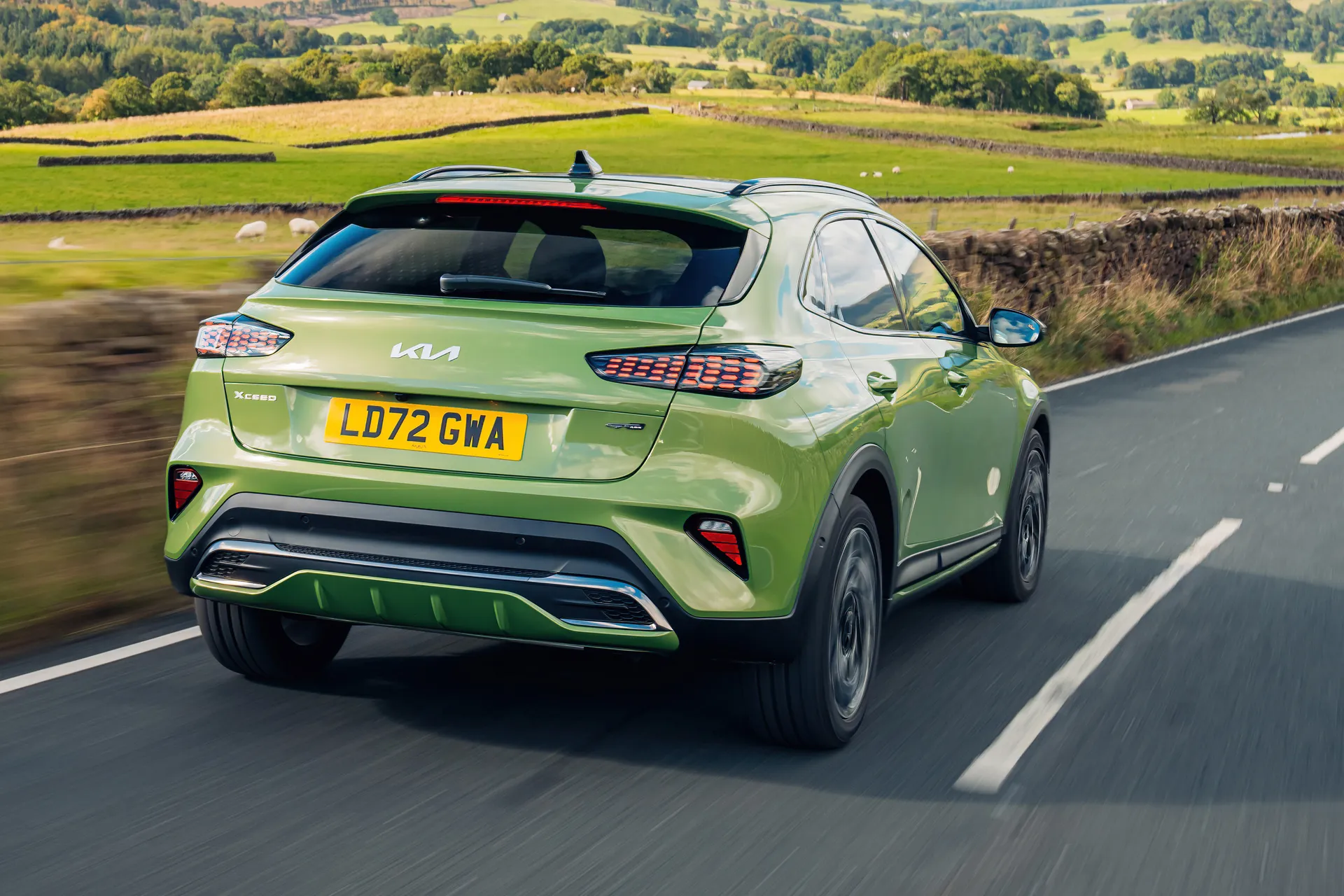
And that’s pretty accurate. Its electric power steering system hasn’t been tweaked at all so it’s still quite direct (if not quite as engaging as a Ford Focus Active), and the XCeed feels agile enough for most drivers. Of course, a higher centre of gravity means it’ll lean a bit more in bends, but you’d probably have to drive the XCeed back-to-back with the Ceed to really notice the difference.
You will be able to tell the difference with the suspension, though. Kia’s fitted softer springs and new hydraulic front bump stops to provide a more compliant ride on even the bumpiest of roads. Whether you want to tackle potholed town centres or broken rural roads, the XCeed provides good comfort that’s significantly better than the standard Ceed.
The ride quality is still pretty good on the heavier plug-in hybrid model. But it's less controlled in the bends, leaning over more noticeably and generally feeling less agile. Don't worry, though, as neither the petrol or hybrid XCeed are going to get the adrenaline pumping on a twisty road anyway.
Despite sitting higher than the standard car, it’s still more hatch-like than alternatives like the Volkswagen T-Roc and Toyota C-HR. That means you don’t sit particularly high and certainly don’t get an SUV-like driving position, helping you see over city traffic. Visibility’s pretty good and it’s not a particularly big car (although it is slightly larger than the standard Ceed), so it’s pretty easy to squeeze through gaps in urban areas. All models get a reversing camera, which helps when parking.
Some buyers might be disappointed that, despite the Kia XCeed's off-roady looks, you can’t get a four-wheel-drive version. We doubt you’ll really miss this in the real world, though - if you’re concerned about bad weather, buy a set of winter tyres. If you actually want to traipse through mud, buy a proper off-roader like a Suzuki Jimny.
What engines and gearboxes are available in the Kia XCeed?
If you're looking to buy a used Kia XCeed, you'll have the choice of three petrols: a 1.0-litre, and a 1.4 that was later replaced by a more powerful 1.5-litre unit. There's also a diesel with two power outputs. As of 2022, your choice became limited to a mild-hybrid 1.5-litre petrol and a 1.6-litre plug-in hybrid.
We really like the buzzy little 120PS 1.0-litre turbocharged petrol. It’s an eager three-cylinder unit that packs just enough punch, accelerating to 62mph in a perfectly acceptable 10.9 seconds. It’s combined with a six-speed manual gearbox which is pretty decent, if a bit woollier than the gearchange you’d find in a Ford Focus Active. The clutch takes a bit of getting used to in all of the petrols, though, with a tricky to judge biting point.
If you need a bit more performance, the four-cylinder 140PS 1.4 petrol has a bit more oomph for national-speed-limit driving, covering 0-62mph in 9.1 seconds when paired with the manual transmission. A seven-speed dual-clutch auto is also available, adding an extra tenth of a second to the acceleration time - not that you’ll really notice the difference. This is a pretty good auto gearbox and takes some of the pain out of city centre driving, but it can occasionally get a bit flustered.
High-mileage drivers should look for a used Kia XCeed powered by the 1.6 CRDi diesel engine, available with 116 or 134PS. Both feel quite gutsy with plenty of mid-range torque, but you might struggle to find one. They were quite expensive to buy new and, as sales were slow when new, you’ll pay a premium on the used market now.
If you're buying a new Kia XCeed, you'll get a more limited choice of the 139PS 1.5-litre mild-hybrid or a 141PS 1.6-litre plug-in hybrid.
The 1.5-litre engine engine has a 48-volt mild-hybrid system which allows engine-off coasting up to 77mph and an improved stop/start function. It regenerates energy while slowing down or braking, although you can feel it pull back which makes cruising at a constant low speed a touch trickier.
Once out of town it offers pretty good performance, despite getting a little noisy at higher revs. You have a choice of six-speed manual or dual-clutch automatic transmissions, and both work well so it comes down to personal preference which will work best for you.
The plug-in hybrid has a modest 8.9kWh battery, but it still manages a decent 30 miles of electric range on a charge, but performance isn't exactly sparkling with a 0-62mph time of 11 seconds. It wouldn't be our pick given the price increase, unless you can benefit from low company car tax.
Refinement and noise levels
Being a small three-cylinder engine, the 1.0-litre petrol motor makes quite a distinctive noise. You’ll notice it, especially if you’re darting around town and working the engine hard, but we wouldn’t describe it as annoying. It just adds character.
The 1.4-litre is a more grown-up engine but still sounds a bit thrashy at high revs. The solution here is to change gear earlier - something you can do in the 1.4 thanks to its extra low-rev shove over the 1.0-litre. And of course, the 1.6-litre diesel is a little grumbly like all diesels, but soon settles down at higher speeds.
The softer springs and chunkier tyres (particularly on the 16-inch wheels) help refinement as well as ride quality. There’s not much in the way of noticeable road noise, although the XCeed’s increased height does mean there’s a tad more wind noise than in the Ceed hatch. It’s a very comfortable cruiser, though, and soon settles down into a refined long-distance companion once up to speed.
The 1.5-litre mild hybrid and 1.6-litre plug-in hybrid both get a bit noisy when you rev them out. Keep the pace modest and they're reasonably quiet, and of course the hybrid will run silently in electric only power with gentle throttle.
Safety equipment: How safe is the Kia XCeed?
There’s a whole heap of the latest active safety technology available on the Kia XCeed and most of it is standard across the range. With a new XCeed, you only get blind spot collision and avoidance tech if you buy the GT-Line S - it's not even an option for the remainder of the line-up.
The Kia XCeed 2 has features like the Forward Collision-Avoidance Assist (City), which uses a camera and sensors to detect an impending low-speed collision with another car and alert the driver. If you don’t respond, it can apply the brakes to mitigate the impact. With all facelifted Xceed models, this also looks out for cyclists and pedestrians.
It also gets Hill-start Assist Control - which will prevent you from clumsily rolling backwards during a hill start - and a Driver Attention Warning which will tell you off if you’re showing signs of drowsiness or inattentiveness. Lane Keep Assist will nudge you back into your lane if you stray, while Lane Following Assist - standard on automatic First Edition models only but added to all facelifted models- can use vehicles ahead to control acceleration, braking and steering when you’re in stop/start traffic.
If a crash can’t be avoided, you’ll find plenty of airbags to keep you safe, while Isofix points on the outer rear seats will keep your young ones secured in place.
The Kia XCeed hasn’t been crash tested by Euro NCAP, however the standard Ceed’s four-star rating applies here. That means it’s a pretty safe car to travel in, but by no means the safest in its class.
MPG and fuel costs: What does a Kia XCeed cost to run?
"The plug-in hybrid Kia XCeed promises as much as 201.7mpg average fuel economy, but you're going to have to be hooking up to a charger a lot to see that sort of figure in the real world."
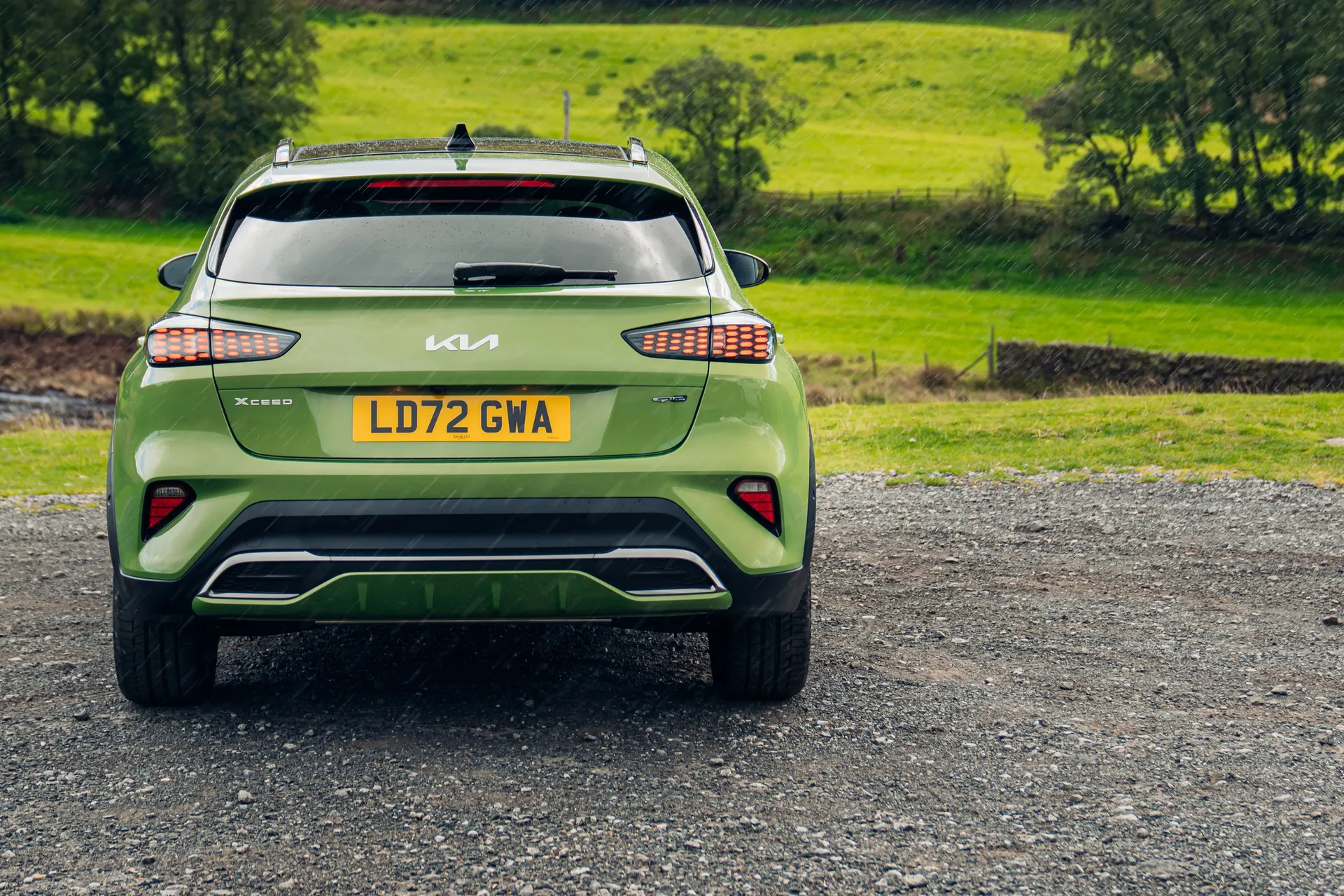
The petrols engine in the XCeed aren’t particularly thirsty, though. Buy an XCeed with the 1.0-litre T-GDi engine and you can expect to see around 45.6mpg with the 16-inch alloy wheels, dropping to 44.1mpg with the bigger 18-inch wheels. Again, that’s according to WLTP tests - the difference is likely to be negligible in the real world.
Even the 1.4-litre petrol won’t consume that much fuel. With the manual gearbox, it officially returns 42.8mpg, dropping to 40.9mpg with the auto transmission (or 40.4mpg in First Edition trim with its fancy alloy wheels).
The 1.5-litre petrol with mild hybrid tech promises up to 46.3mpg combined efficiency and it's possible to get very near that in normal driving. The 201.7mpg claimed by the 1.6-litre plug-in hybrid model is a much more optimistic figure that is only realistic if you maximise its EV driving potential and rarely use the petrol mode.
How reliable is the Kia XCeed?
Kia is a very dependable car brand, ranking eight out of 29 as a brand for reliability in the latest HonestJohn.co.uk Satisfaction Index.
The Kia XCeed comes with a seven-year manufacturer warranty, while we're not aware of any common issues. Servicing should be affordable, too.
Insurance groups and costs
The Kia XCeed shouldn’t be much more to insure than the standard Ceed and certainly no more expensive than rivals. The cheapest will be the 3 model with the 1.0 T-GDi model, as this falls into group 12. The priciest will be the First Edition models which, with the 1.4 engine, are classed as group 16. If you’re concerned about the cost of insurance, it’s always worth shopping around for quotes.
Should you fancy the plug-in hybrid model, it falls into the 15E rating for insurance.
VED car tax: What is the annual road tax on a Kia XCeed?
The Kia XCeed will cost £180 a year in tax in the year after the first registration. That’s a flat rate that’ll also apply to rivals, except for hybrid alternatives like the Toyota C-HR which’ll save you £10 a year.
You could also look at the plug-in hybrid XCeed, too, which costs just £10 in the first year to tax and enjoys a £10 discount in the subsequent five years as it's classed as an alternative fuel vehicle.
How much should you be paying for a used Kia XCeed?
"The Kia XCeed is relatively affordable whether you're buying new or used. The cheapest XCeeds on the used market start from £11,000.
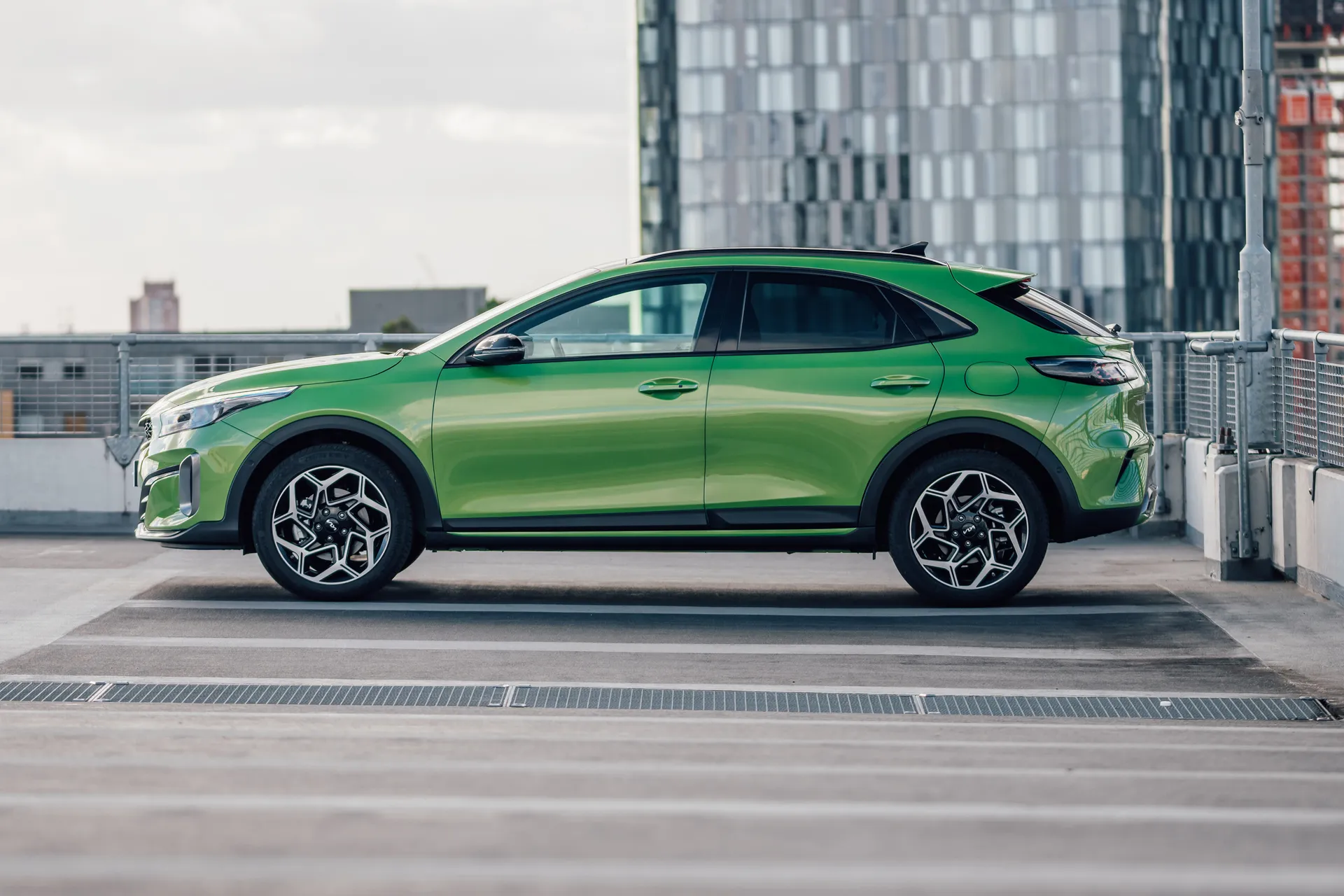
New prices for the Kia Xceed run from a little more than £24,000 for the 1.5 in 2 trim and all the way to just less than £32,000 for the GT-Line S model. Opt for the plug-in hybrid model and it only comes in 3 trim and costs around £33,500 - £6000 more than the mild hybrid 3 version.
If you want to save a bit of cash check out the pre-facelift model (it's not that much different, anyway). £11,000 will get you a 2020 XCeed 3 with the 1.0-litre petrol engine, with the 1.4 petrol and diesel starting at around £13,500.
Trim levels and standard equipment
There’s no properly basic entry-level Kia XCeed sold in the UK. The most affordable Kia XCeed 2 comes with things like 16-inch alloy wheels and LED headlights. There’s also an eight-inch touchscreen media system (with Apple CarPlay and Android Auto) and even a reversing camera. In truth, you probably don’t need much more.
The XCeed 3 is packed with desirable ‘nice to have’ features and won’t cost a great deal more on the used market. Standard kit includes 18-inch alloy wheels, a 10.25-inch navigation system and privacy glass. It’s a very comfortable choice, with heated front seats (with half faux-leather upholstery), a heated steering wheel and power-adjustable lumbar support (for the driver and front passenger).
Kia loves a special edition model. Look for an XCeed Edition for things like premium paint (Lunar Silver, Quantum Yellow or Blue Flame), 18-inch alloy wheels and privacy glass, although it’s not as well kitted out as the Kia XCeed 3.
The Kia XCeed First Edition, meanwhile, is an appealing choice for used buyers. Standard kit includes a panoramic sunroof, yellow detailing on the seat upholstery, an electric tailgate and a swish 12.3-inch TFT supervision cluster display. It also gets a JBL premium sound system and a wireless phone charger. This model is loaded with safety kit, too - ranging from a Blind Spot Collision Warning to Smart Cruise Control (on models fitted with the DCT automatic gearbox).
The GT-Line S combines all the elements of the lower trims, so you get 18-inch alloys and panoramic glass roof. It also comes with a 12.3-inch digital main instrument display, black leather and suede upholstery, and wireless mobile phone charger. The 10.25inch infotainment touchscreen is aided by an eight speaker JBL premium sound system. And this trims gains added safety tech with Blind Spot Collision Warning and an Intelligent Speed Limit Warning.
Ask the heycar experts: common questions
What's the difference between the Kia XCeed and Kia Ceed?
Is the Kia XCeed bigger than the Sportage?
Is the Kia XCeed 4 wheel drive?
Get our latest advice, news and offers
Keep me updated by email with the latest advice, news and offers from heycar.
By submitting you agree to our privacy policy
